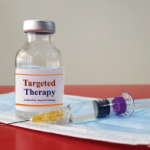Additionally, many of the disease activity scores used for SpA (i.e., ASDAS, BASDAI, ASAS-PR) may not apply well—specifically to axial involvement. Of these scores, Dr. Haroon notes that ASDAS probably best represents patients with axial disease, but ASDAS does not include extra-articular manifestations. Thus, the score can be 0 even when these features are present and active. Also, health-related quality of life may still be poor in patients despite a low ASDAS score, indicating potential disagreement between how the patient appears to be doing objectively and how they are feeling and functioning in reality.
Dr. Haroon presented an alternative: Using the change in ASDAS score from before to after treatment intervention. In fact, studies have shown that a change of 1.1 units in the ASDAS score is clinically meaningful.3,4
Timely Diagnosis
Finally, Dr. Haroon described the important window of opportunity, which may be key for treating patients with SpA, particularly those with axial involvement. Diagnostic delay is an issue that commonly plagues this window—when young patients with inflammatory back pain symptoms are not recognized as having signs of disease and not promptly referred to a rheumatologist for evaluation.
Early in the disease course is the ideal time to employ disease-modifying therapy that may prevent joint damage and chronic changes. It’s this window of opportunity—early in the course of disease—that may be the best period during which to study treat to target. Thus, attempting to see if we can change the disease trajectory for patients and save them from the long-term consequences of uncontrolled disease.
The jury is still out on treat-to-target for patients with SpA, but Dr. Haroon’s message was clear: Don’t give up on this strategy just yet.
Jason Liebowitz, MD, is an assistant professor of medicine in the Division of Rheumatology at Columbia University Vagelos College of Physicians and Surgeons, New York.
References
- Ward MM, Deodhar A, Gensler LS, et al. 2019 update of the American College of Rheumatology/Spondylitis Association of America/Spondyloarthritis Research and Treatment network recommendations for the treatment of ankylosing spondylitis and non-radiographic axial spondyloarthritis. Arthritis Care Res (Hoboken). 2019 Oct;71(10): 1285–1299.
- Molto A, López-Medina C, Van den Bosch FE, et al. Efficacy of a tight-control and treat-to-target strategy in axial spondyloarthritis: results of the open-label, pragmatic, cluster-randomised TICOSPA trial. Ann Rheum Dis. 2021 Nov;80(11):1436–1444.
- Liew JW, Dubreuil M. Treat to target in axial spondyloarthritis: Pros, cons and future directions. Rheum Dis Clin North Am. 2020 May;46(2):343–356.
- Dougados M. Treat to target in axial spondyloarthritis: From its concept to its implementation. J Autoimmun. 2020 Jun;110:102398.

